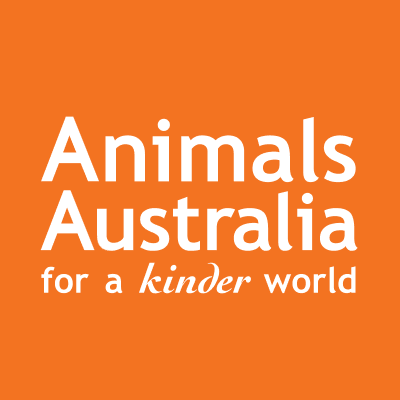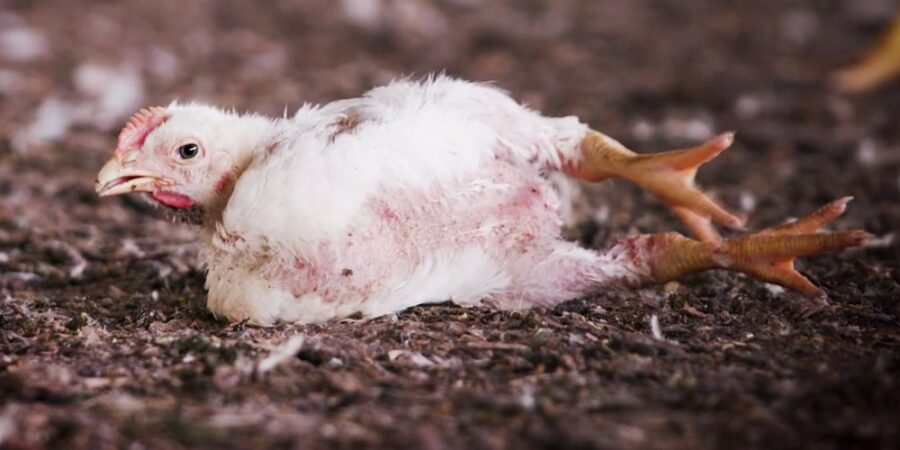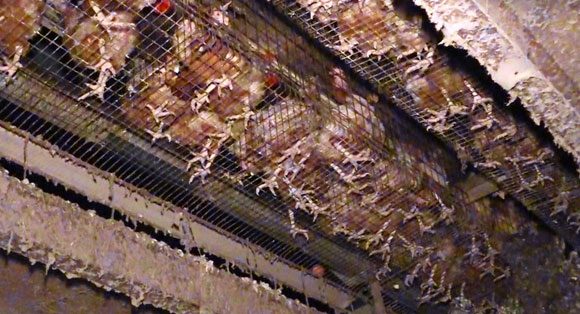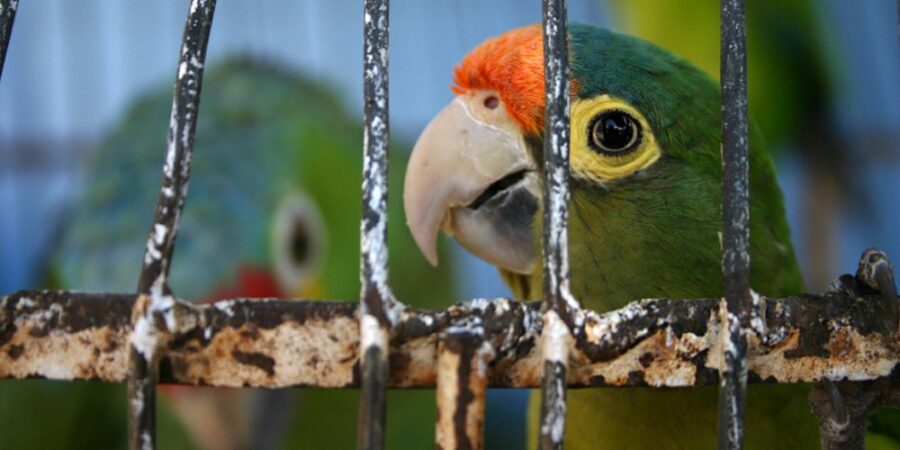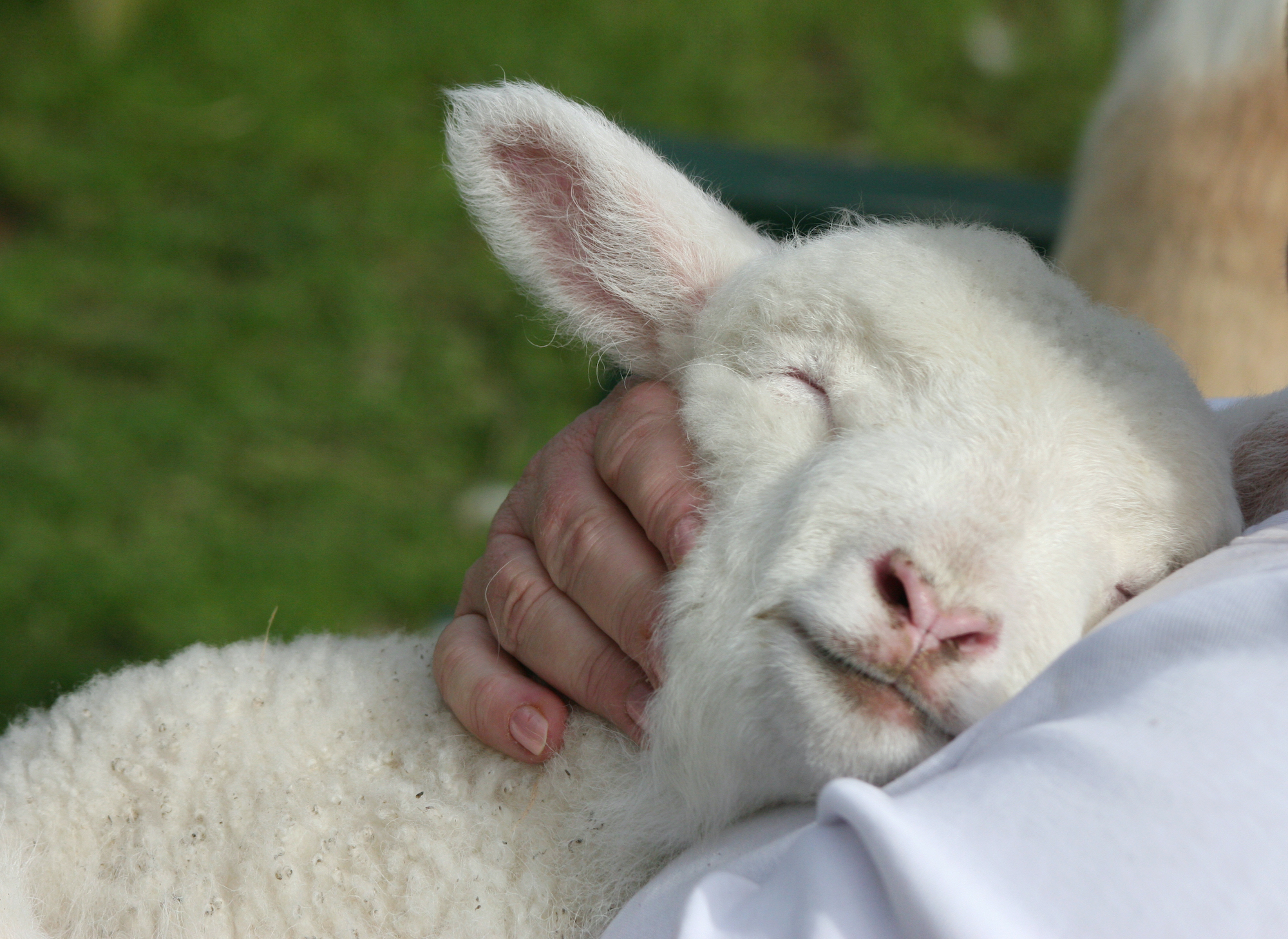[1] Graham JP, Leibler JH, Price LB, Otte JM, Pfeiffer DU, Tiensin T & Silbergeld EK. (2008) The Animal-Human Interface and Infectious Disease in Industrial Food Animal Production: Rethinking Biosecurity and Containment. Public Health Reports, 123: 282-299.
[2] Bullanday Scott A, Toribio JA, Singh M, Groves P, Barnes B, Glass K, Moloney B, Black A & Hernandez-Jover M. (2018) Low pathogenic avian influenza exposure risk assessment in Australian commercial chicken farms. Frontiers in Veterinary Science, 5: 68. DOI:10.3389/fvets.2018.00068.
[3] Rural and Regional Affairs and Transport Legislation Committee, Answers to Questions on Notice – Budget Estimates May 2015: Question 62. Proof Hansard page: 30 (26.5.2015).
[4] Stephenson LM, Biggs JS, Sheppeard V & Oakman TL. (2016) An evaluation of the use of short message service during an avian influenza outbreak on a poultry farm in Young. Communicable Diseases Intelligence, 40(2): E195-E201.
[5] L Barbour & N Whiting, ‘Another bird flu outbreak near Young’, 25 October 2013, https://www.abc.net.au/news/rural/2013-10-24/nrn-more-bird-flu/5043936.
[6] Animal Health Australia, ‘Avian influenza outbreak controlled’, 30 November 2012, https://www.animalhealthaustralia.com.au/news/avian-influenza-outbreak-controlled/.
[7] Selleck PW, Arzey G, Kirkland PD, Reece RL, Gould AR, Daniels PW & Westbury HA. (2003) An outbreak of highly pathogenic avian influenza in Australia in 1997 caused by an H7N4 virus. Avian Diseases, 47: 806-811.
[8] Westbury HA. (2003) History of highly pathogenic avian influenza in Australia. Avian Diseases, 47: 23-30.
[9] Westbury HA. (2003) History of highly pathogenic avian influenza in Australia. Avian Diseases, 47: 23-30.
[10] Westbury HA. (2003) History of highly pathogenic avian influenza in Australia. Avian Diseases, 47: 23-30.
[11] Westbury HA. (2003) History of highly pathogenic avian influenza in Australia. Avian Diseases, 47: 23-30.
[12] Centre for Disease Control and Prevention, ‘2009 H1N1 Pandemic (H1N1pdm09 virus)’, accessed: 22 April 2020, https://www.cdc.gov/flu/pandemic-resources/2009-h1n1-pandemic.html.
[13] G Jones, ‘Farm quarantine as 2000 pigs catch swine flu’, 1 August 2009, Daily Telegraph, https://www.dailytelegraph.com.au/farm-quarantine-as-2000-pigs-catch-swine-flu/news-story/df8c6486ca43b23314c5851f149cb4b7?sv=9b3284272084d8926339db7221bc1e8d.
[14] ‘Swine flu detected in Vic piggery’, 19 August 2009, Stock & Land, https://www.stockandland.com.au/story/3642748/swine-flu-detected-in-vic-piggery/.
[15] F Rego, ‘Dalby piggery quarantined over swine flu fears’, 26 August 2009, ABC News Online, https://www.abc.net.au/news/2009-08-26/dalby-piggery-quarantined-over-swine-flu-fears/1404426.
[16] Agriculture Victoria, ‘Animal Health in Victoria 2017’, p 27.
Agriculture Victoria, ‘Animal Health in Victoria 2018’, p 17.
[17] Wong FYK, Donato C & Deng YM et al. (2018) Divergent Human-Origin Influenza Viruses Detected in Australian Swine Populations. Journal of Virology, 92(16): e00316-18.
[18] Smith DW, Barr IG, Loh R, Levy A, Tempone S, O’Dea M, Watson J, Wong FYK & Effler PV. (2019) Respiratory illness in a piggery associated with the first identified outbreak of swine influenza in Australia: assessing the risk to human health and zoonotic potential. Tropical Medicine and Infectious Disease, 4: 96; doi:10.3390/tropicalmed4020096.
[19] World Health Organization, ‘Influenza at the human-animal interface’, Summary and assessment: 22 January to 12 February 2019, https://www.who.int/influenza/human_animal_interface/Influenza_Summary_IRA_HA_interface_12_02_2019.pdf
[20] Deng YM, Wong FYK & Spirason N et al. (2020) Locally Acquired Human Infection with Swine-Origin Influenza A(H3N2) Variant Virus, Australia, 2018. Emerging Infectious Diseases, 26(1): 143-147.
[21] Rahaman MR, Milazzo A, Marshall H & Bi P. (2020) Spatial, temporal, and occupational risks of Q fever infection in South Australia, 2007-2017. Journal of Infection and Public Health, 13(4): 544-551.
[22] National Notifiable Diseases Surveillance System. Report table containing the number of notifications for all diseases by year, from 1991 to 2019, http://www9.health.gov.au/cda/source/rpt_2.cfm (accessed 22 April 2020).
[23] Woldeyohannes SM., Gilks CF., Baker P., Perkins NR. & Reid SA. (2018) Seroprevalence of Coxiella burnetti among abattoir and slaughterhouse workers: A meta-analysis. One Health, 6: 23-28.
[24] Connor BA, Tribe IG & Givney R. (2015) A windy day in a sheep saleyard: an outbreak of Q fever in rural South Australia. Epidemiology & Infection, 143: 391-398.
[25] Agriculture Victoria, ‘Animal Health in Victoria 2015’, pp 42.
[26] Agriculture Victoria, ‘Animal Health in Victoria 2016’, pp 40-41.
[27] van der Hoek W, Morroy G, Renders NH, Wever PC, Hermans MH, Leenders AC & Schneeberger PM. (2012) Epidemic Q fever in humans in the Netherlands. Advances in Experimental Medicine and Biology, 984: 329-364.
[28] Schneeberger PM, Wintenberger C, can der Hoek W & Stahl JP. (2014) Q fever in the Netherlands – 2007-2010: what we learned from the largest outbreak ever. Medecine et maladies infectieuses, 44: 339-353.
[29] Barro AS, Fegan M, Moloney B, et al. (2016) Redefining the Australian Anthrax Belt: Modeling the Ecological Niche and Predicting the Geographic Distribution of Bacillus anthracis. PLoS Neglected Tropical Diseases, 10(6): e0004689.
[30] NSW Department of Primary Industries and Local Land Services, ‘New South Wales Animal Health Surveillance’:
Issue 2015/4 (October-December), p 3.
Issue 2016/1 (January-March), p 2.
Issue 2017/1 (January-March), p 2.
Issue 2018/1 (January-March), pp 3-4.
Issue 2018/2 (April-June), p 2.
Issue 2018/3 (July-September), p 3.
Issue 2019/1 (January-June), p 3.
[31] Agriculture Victoria, ‘Animal Health in Victoria 2017’, pp 11-13.
Agriculture Victoria, ‘Animal Health in Victoria 2018’, pp 14-16.
[32] National Notifiable Diseases Surveillance System. Report table containing the number of notifications for all diseases by year, from 1991 to 2019. Accessed 22 April 2020, http://www9.health.gov.au/cda/source/rpt_2.cfm.
[33] Gibney KB, O’Toole J, Sinclair M & Leder K. (2014) Disease burden of selected gastrointestinal pathogens in Australia, 2010. International Journal of Infectious Diseases, 28: 176-185.
[34] Moffatt CRM, Fearnley E, Bell R, et al. (2019) Characteristics of Campylobacter Gastroenteritis Outbreaks in Australia, 2001 to 2016. Foodborne Pathogens and Disease, DOI:10.1089/fpd.2019.2731.
[35] Moffatt CRM, Musto J, Pingault N, et al. (2017) Recovery of Salmonella enterica from Australian Layer and Processing Environments Following Outbreaks Linked to Eggs. Foodborne Pathogens and Disease, 14(8): 478-482.
[36] Ford L, Glass K, Veitch M, et al. (2016) Increasing Incidence of Salmonella in Australia, 2000-2013. PLoS ONE, 11(10): e0163989.
[37] Chen SH, Fegan N, Kocharunchitt C, et al. (2020) Changes of the bacterial community diversity on chicken carcasses through an Australian poultry processing line. Food Microbiology, 86: 103350.
Klein M, Brown L, Tucker RW, et al. (2010) Diversity and Abundance of Zoonotic Pathogens and Indicators in Manures of Feedlot Cattle in Australia. Applied and Environmental Microbiology, 76(20): 6947-6950.
McCauley CM, McMillan K, Moore SC, et al. (2014) Prevalence and characterization of foodborne pathogens from Australian dairy farm environments. Journal of Dairy Science, 97: 7402-7412.
McWhorter AR & Chousalkar KK. (2020) Salmonella on Australian cage egg farms: Observations from hatching to end of lay. Food Microbiology, 87: 103384.
Moono P, Putsathit P, Knight DR, et al. (2016) Persistence of Clostridium difficile RT 237 infection in a Western Australian piggery. Anaerobe, 37: 62-66.
Stanger KJ, McGregor H, Marenda M, et al. (2018) A longitudinal study of faecal shedding of Yersinia enterocolitica and Yersinia pseudotuberculosis by Merino lambs in south-eastern Australia. Preventative Veterinary Medicine, 153: 30-41.
Van Breda LK, Dhungyel OP, Ginn AN, et al. (2017) Pre- and post-weaning scours in southeastern Australia: A survey of 22 commercial pig herds and characterization of Escherichia coli isolated. PLoS ONE, 12(3): e0172528.
Van Breda LK, Dhungyel OP & Ward MP. (2017) Antibiotic resistant Escherichia coli in southeastern Australian pig herds and implications for surveillance. Zoonoses Public Health, 65: e1-e7.
Yang R, Jacobson C, Gardner G, et al. (2014) Longitudinal prevalence, oocyst shedding and molecular characterization of Cryptosporidium species in sheep across four states in Australia. Veterinary Parasitology, 200: 50-58.
Yang R, Gardner GE, Ryan U & Jacobson C. (2015) Prevalence and pathogen load of Cryptosporidium and Giardia in sheep faeces collected from saleyards and in abattoir effluent in Western Australia. Small Ruminant Research, 130: 216-220.
[38] * Dawson AC, Ashander LM, Appukuttan B., et al. (2020) Lamb as a potential source of Toxoplasma gondii infection for Australians. Australian and New Zealand Journal of Public Health, 44: 49-52.
McLellan JE, Pitcher JI, Ballard SA, et al. (2018) Superbugs in the supermarket? Assessing the rate of contamination with third-generation cephalosporin-resistant gram-negative bacteria in fresh Australian pork and chicken. Antimicrobial Resistance and Infection Control, 7: 30.
Vangchhia B, Blyton MDJ, Collignon P, et al. (2018) Factors affecting the presence, genetic diversity and antimicrobial sensitivity of Escherichia coli in poultry meat samples collected from Canberra, Australia. Environmental Microbiology, 20(4): 1350-1361.
Sodagari HR, Mohammed AB, Wang P, et al. (2019) Non-typhoidal Salmonella contamination in egg shells and contents from retail in Western Australia: Serovar diversity, multilocus sequence types, and phenotypic and genomic characterizations of antimicrobial resistance. International Journal of Food Microbiology, 308: 108305.
Wilson A, Gray J, Chandry PS & Fox EM. (2018) Phenotypic and Genotypic Analysis of Antimicrobial Resistance among Listeria monocytogenes Isolated from Australian Food Production Chains. Genes, 9: 80.
[39] Haines H, Bobbitt J & Simons J, et al. (2000), ‘A review of process interventions aimed at reducing contamination of cattle carcasses’, Final report prepared for Meat & Livestock Australia.
[40] Food and Agriculture Organization of the United Nations and World Health Organisation (2009) ‘Salmonella and Campylobacter in chicken meat: Meeting report’, Microbiological Risk Assessment Series No. 19, Rome.
[41] Haines H, Bobbitt J & Simons J, et al. (2000), ‘A review of process interventions aimed at reducing contamination of cattle carcasses’, Final report prepared for Meat & Livestock Australia.
[42] Food and Agriculture Organization of the United Nations and World Health Organisation (2009) ‘Salmonella and Campylobacter in chicken meat: Meeting report’, Microbiological Risk Assessment Series No. 19, Rome.
[43] Oliver SP, Jayarao BM & Almeida RA. (2005) Foodborne Pathogens in Milk and the Dairy Farm Environment: Food Safety and Public Health Implications. Foodborne Pathogens and Disease, 2(2): 115-146.
[44] McWhorter AR & Chousalkar KK. (2020) Salmonella on Australian cage egg farms: Observations from hatching to end of lay. Food Microbiology, 87: 103384.
[45] McWhorter AR & Chousalkar KK. (2020) Salmonella on Australian cage egg farms: Observations from hatching to end of lay. Food Microbiology, 87: 103384.
[46] Polkinghorne A, Weston K & Branley J. (2020) Recent history of psittacosis in Australia: expanding our understanding of the epidemiology of this important globally distributed zoonotic disease. Internal Medicine Journal, 50: 246-249.
[47] National Notifiable Diseases Surveillance System. Report table containing the number of notifications for all diseases by year, from 1991 to 2019, http://www9.health.gov.au/cda/source/rpt_2.cfm (accessed 22 April 2020).
[48] Polkinghorne A, Weston K & Branley J. (2020) Recent history of psittacosis in Australia: expanding our understanding of the epidemiology of this important globally distributed zoonotic disease. Internal Medicine Journal, 50: 246-249.
[49] Polkinghorne A, Weston K & Branley J. (2020) Recent history of psittacosis in Australia: expanding our understanding of the epidemiology of this important globally distributed zoonotic disease. Internal Medicine Journal, 50: 246-249.
[50] Amery-Gale J, Legione AR, Marenda MS, et al. (2019) Surveillance for Chlamydia spp. with multilocus sequence typing analysis in wild and captive birds in Victoria, Australia. Journal of Wildlife Diseases, 56(1): 16-26.
[51] Sutherland M, Sarker S, Vaz PK, et al. (2019) Disease surveillance in wild Victorian cacatuids reveals co-infection with multiple agents and detection of novel avian viruses. Veterinary Microbiology, 235: 257-264.
[52] Westwood JCN (1953) Psittacosis: Recent Epidemiological Observations. Proceedings of the Royal Society of Medicine, 46(10): 814-816.
[53] Cox L & Oltermann P, ‘Australia gave endangered birds to secretive German ‘zoo’, ignoring warnings’, 11 December 2018, The Guardian, https://www.theguardian.com/environment/2018/dec/11/australia-endangered-parrots-german-zoo-actp.
[54] Murphy P, ‘Organised crime and the global trade in exotic pets’, 16 November 2017, DFAT Blog, https://blog.dfat.gov.au/2017/11/16/organised-crime-and-the-global-trade-in-exotic-pets/.
[55] Australia’s notifiable diseases status, 2004, Annual Report of the National Notifiable Diseases Surveillance System, pp. 66-67.
[56] Tiong A, Vu T, Counahan M, et al. (2007) Multiple sites of exposure in an outbreak of ornithosis in workers at a poultry abattoir and farm. Epidemiology & Infection, 135: 1184-1191.
[57] Hinton DG, Shipley A, Galvin JW, et al. (1993) Chlamydiosis in workers at a duck farm and processing plant. Australian Veterinary Journal, 70(5): 174-176.
[58] Australia’s notifiable diseases status, 2004, Annual Report of the National Notifiable Diseases Surveillance System, pp. 66-67.
[59] Australia’s notifiable diseases status, 2004, Annual Report of the National Notifiable Diseases Surveillance System, pp. 66-67.
[60] Chan J, Doyle B, Branley J, et al. (2017) An outbreak of psittacosis at a veterinary school demonstrating a novel source of infection. One Health, 3: 29-33.
[61] Eaton BT, Broder CC, Middleton D & Wang LF. (2006) Hendra and Nipah viruses: different and dangerous. Nature Reviews Microbiology, 4: 23-35.
[61b] Queensland Department of Environment and Science, ‘Viruses carried by flying-foxes’, https://environment.des.qld.gov.au/wildlife/animals/living-with/bats/flying-foxes/viruses (accessed: 6 May 2020).
[62] Queensland Health, ‘Hendra Virus Infection- Queensland Health Guidelines for Public Health Units’, https://www.health.qld.gov.au/cdcg/index/hendra (accessed: 27 April 2020).
[63] Business Queensland, ‘Summary of Hendra virus incidents in horses’, https://www.business.qld.gov.au/industries/service-industries-professionals/service-industries/veterinary-surgeons/guidelines-hendra/incident-summary (accessed: 27 April 2020).
[64] Spickler AR. (2016) Menangle. Retrieved from: http://www.cfsph.iastate.edu/DiseaseInfo/factsheets.php.
Wiethoelter AK, Beltran-Alcrudo D, Kock R & Mor SM. (2015) Global trends in infectious diseases at the wildlife-livestock interface. PNAS, 112(31): 9662-9667.
[64b] Love RJ, Philbey AW, Kirkland PD, et al. (2001) Reproductive disease and congenital malformation caused by Menangle virus in pigs. Australian Veterinary Journal, 79(3): 192-198.
[65] Ridoutt C, Lee A & Moloney B, et al. (2014) Detection of brucellosis and leptospirosis in feral pigs in New South Wales. Australian Veterinary Journal, 92(9): 343-347.
[66] Eales K, Norton R & Ketheesan N. (2010) Short Report: Brucellosis in Northern Australia. The American Journal
[67] of Tropical Medicine and Hygiene, 83(4): 876-878.
[68] Mor SM, Wiethoelter AK & Lee A, et al. (2016) Emergence of Brucella suis in dogs in New South Wales, Australia: clinical findings and implications for zoonotic transmission. BMC Veterinary Research, 12: 199.
[69] Hendry M & Semmler E, ‘Unique school fundraiser boosts morale in drought-stricken Dingo’, 24 September 2019, ABC News Online, https://www.abc.net.au/news/2019-09-24/feral-pig-hunt-boosts-central-queensland-town/11537560.
[70] Robinson P, ‘Hundreds of feral pigs caught and killed in Australia’s largest hunting competition’, 4 June 2018, ABC News Online, https://www.abc.net.au/news/2018-06-04/hundreds-feral-pigs-caught-in-aust-biggest-hunting-competition/9829360.
[71] Mor SM, Wiethoelter AK & Massey PD, et al. (2018) Pigs, pooches and pasteurization- The changing face of brucellosis in Australia. AJGP, 47(3): 99-103.


